About This File
F-103 Mirage III Brazilian Air Force
Install - Need Update July 2012, DLC Mirage IIIO (DLC Mirage IIIEL optional cockpit)
History
The history of the Mirage III in Brazil goes back to the sixties, when the FAB elaborated a modernization program and the creation of an air space control system. In 1967 the implementation started of the SISDACTA- Sistema Integrado de Defesa Aérea e Controle de Tráfego Aéreo (Integrated Air Traffic Control and Air Defence System) and of the COMDA-Comando de Defesa Aérea (Air Defence Command).
As part of the program, it was necessary to acquire a supersonic aircraft to execute the air defence and interception missions. The FAB's initial desire was to obtain the McDonnell Douglas F-4 Phantom II, however it could not be materialised because of American restrictions on the sale of advanced military equipment to South American countries.
With the Phantom out of the game, the remaining option was to look for an European fighter. Among the contenders were the British English Electric Lightning, the Swedish Saab Draken and the French Dassault-Breguet Mirage IIIE. About the same time, the Mirage IIIC, in the hands of the Israeli pilots, inflicted heavy losses to its Arabic neighbours in the 'Six Day War'. There is no doubt that the Mirage III's excellent performance, achieved by the Israelis in that war, helped Dassault-Breguet secure many clients around the world, including Brazil.
Operational Career
On April 11, 1979, the 1º GDA ( Primeiro Grupo de Defesa Aérea – First Air Defence Group) was officially established. On April 19, 1979, the 1º ALADA was disbanded and the 1º GDA took over its functions and F-103 aircraft. The 1º GDA remained stationed at Anápolis AB.
During its operational career in Brazil, the Mirage III fleet suffered some attrition and many additional airframes were bought to replace the lost ones and to keep up the 1º GDA's combat readiness. In total, Brazil acquired 16 additional aircraft from Armée de L’Air surplus. These consisted of four F-103E in 1980, two F-103D in 1984, two F-103E in 1988, two F-103D and two F-103E in 1989, two F-103E in 1998 and the last two F-103D in 1999.
The F-103 Mirage IIIEBR represented a tremendous leap to the Brazilian Air Force, being over thirty years of service and more than 65,000 flying hours.
The versions of Mirage III acquired by FAB were developed primarily for air defense missions, but keep some capacity to act as platforms for ground attack.
The engine was a SNECMA ATAR 09C, whose maximum thrust with afterburning reached 13,900 pounds (6305 kg), leading the aircraft a maximum speed of Mach 2.2 (2,350 km / h).
The fire control system was based on radar Thomson-CSF Cyrano II, which originally operated the integrated air-to-air missile infrared Matra R530, later replaced by Israeli missile Python III.
As arms fixed, the aircraft was equipped with two 30 mm DEFA. For navigation, the Mirage III FAB type Doppler systems used. In the early '90s, the FAB joined the Squadron's missions Jaguar air-ground attack, starting to use free-fall bombs and rocket launchers.
(Portuguese)
História
A história do Mirage III no Brasil remonta à década de sessenta, quando a FAB elaborou um programa de modernização e criação de um sistema de controle do espaço aéreo. Em 1967, a implementação começou da SISDACTA- Sistema Integrado de Defesa Aérea e Controle de Tráfego Aéreo (Air Traffic Control Integrado e Air Sistema de Defesa) e do COMDA-Comando de Defesa Aérea (Comando de Defesa Aérea).
Como parte do programa, foi necessário adquirir um avião supersônico para executar as missões de defesa aérea e interceptação. Desejo inicial da FAB foi obter a McDonnell Douglas F-4 Phantom II, no entanto, ele não poderia ser materializado por causa das restrições americanas sobre a venda de equipamento militar avançado para os países da América do Sul.
Com o Fantasma fora do jogo, a opção restante era procurar um lutador europeu. Entre os contendores foram o Inglês Britânico elétrico do relâmpago, a sueca Saab Draken e os franceses Dassault-Breguet Mirage IIIE. Quase ao mesmo tempo, o Mirage IIIC, nas mãos dos pilotos israelenses, infligiu pesadas perdas para os seus vizinhos árabes na 'Guerra dos Seis Dias ". Não há dúvida de que o excelente desempenho do Mirage III, alcançada pelos israelenses em que a guerra, ajudou a Dassault-Breguet garantir muitos clientes ao redor do mundo, incluindo o Brasil.
Carreira Operacional
Em 11 de abril de 1979, o 1º GDA (Primeiro Grupo de Defesa Aérea - First Air Grupo de Defesa) foi criada oficialmente. Em 19 de abril de 1979 a 1º ALADA foi dissolvida e o 1º GDA assumiu suas funções e aeronaves F-103. O 1º GDA permaneceu estacionada em Anápolis AB.
Durante a sua carreira operacional no Brasil, a frota de Mirage III sofrido algum desgaste e muitas fuselagens adicionais foram comprados para substituir os perdidos e para manter a prontidão de combate do 1º GDA. No total, o Brasil adquiriu 16 aeronaves adicionais a partir do excedente Armée de L'Air. Estes consistiram de quatro F-103E, em 1980, dois F-103D em 1984, dois F-103E, em 1988, dois F-103D e dois F-103E, em 1989, dois F-103E em 1998 e os dois últimos F-103D em de 1999.
O F-103 Mirage IIIEBR representou um tremendo salto para a Força Aérea Brasileira, ficando mais de trinta anos de serviço e voando mais de 65.000 horas.
Os Mirage III das versões adquiridas pela FAB foram desenvolvidas primariamente para missões de defesa aérea, embora mantivessem alguma capacidade de atuar como plataformas de ataque ao solo.
O motor era um SNECMA ATAR 09C, cujo empuxo máximo com pós-combustão alcançava 13.900 libras (6.305 kg), levando a aeronave a velocidade máxima de Mach 2,2 (2.350 km/h).
O sistema de controle de fogo era baseado no radar Thomson-CSF Cyrano II, que originalmente operava integrado ao míssil ar-ar infra-vermelho Matra R530, depois substituído pelo míssil israelense Python III.
Como armamento fixo, a aeronave era dotada de dois canhões DEFA de 30 mm. Para navegação, os Mirage III da FAB utilizavam sistemas tipo Doppler. No inícios dos anos 90, a FAB incorporou ao Esquadrão Jaguar as missões de ataque ar-solo, passando a utilizar bombas de queda livre e lançadores de foguetes.
Special thanks to Paulopanz and Coupi.
Mirage IIIEBR (3 textures and 1 silver texture)
Mirage IIIEBR (fictitious - fuel probe test in 1990-93)
Mirage IIIDRB (late and Early)
Modelo - TK (Mirage IIIO)
Texture - Ludo, Denis Oliveira
mod - Denis Oliveira
Decals - Paulopanz
Data.ini - Denis Oliveira, Coupi
What's New in Version v3.0
Released
- New mod (shine, especular and bump map)
- New Textures
- New Data.ini
-
 1
1


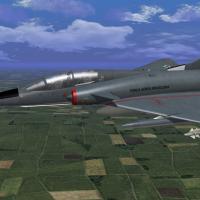
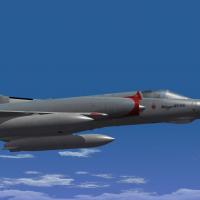

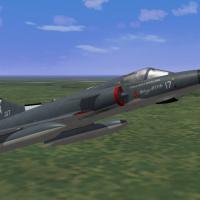
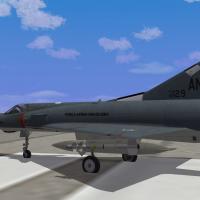
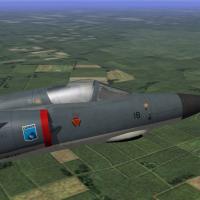
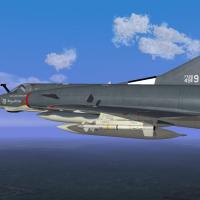
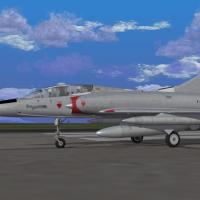
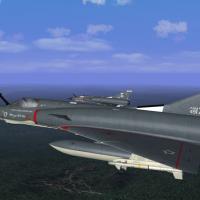
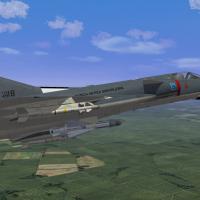
Recommended Comments
Create an account or sign in to comment
You need to be a member in order to leave a comment
Create an account
Sign up for a new account in our community. It's easy!
Register a new accountSign in
Already have an account? Sign in here.
Sign In Now